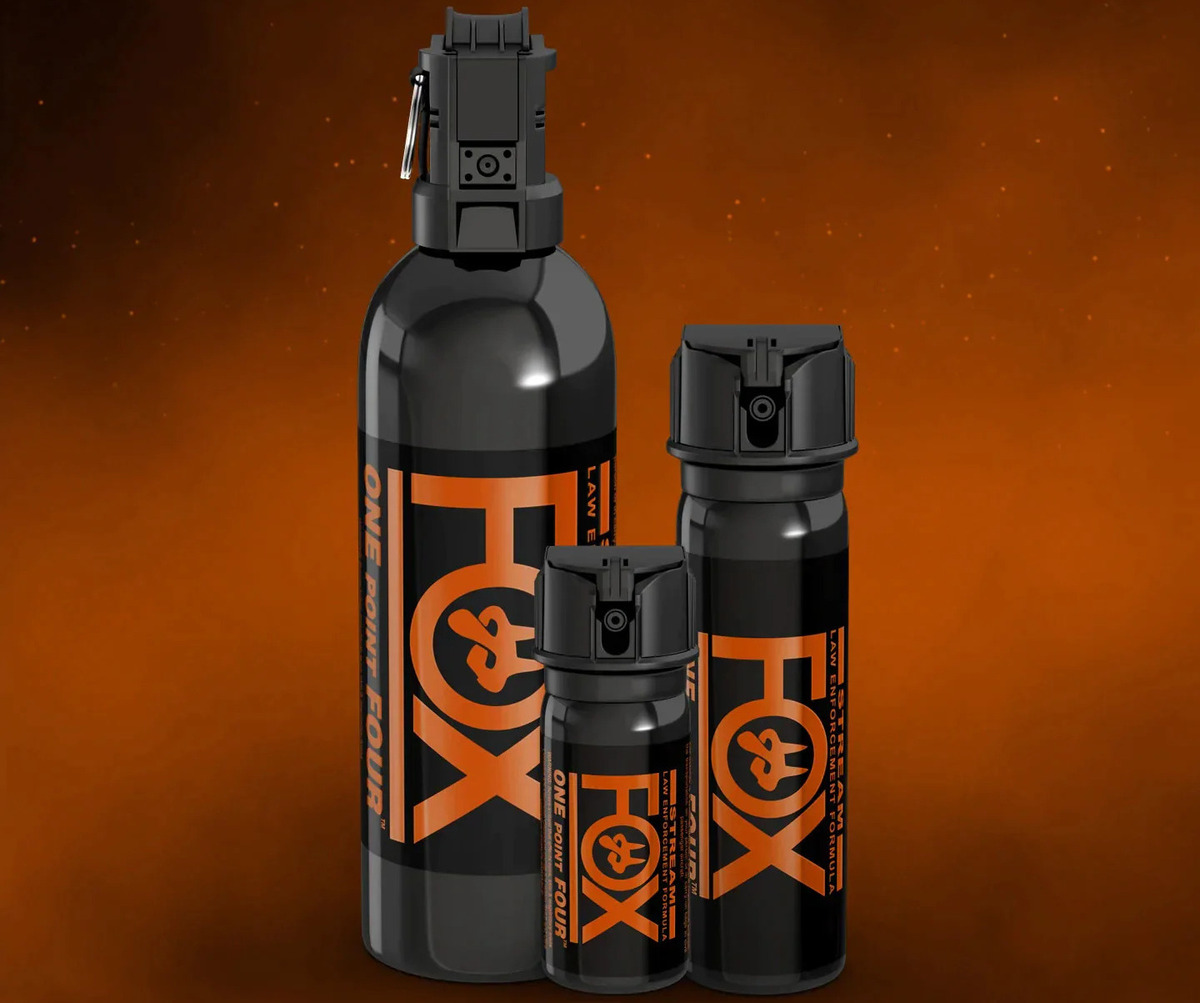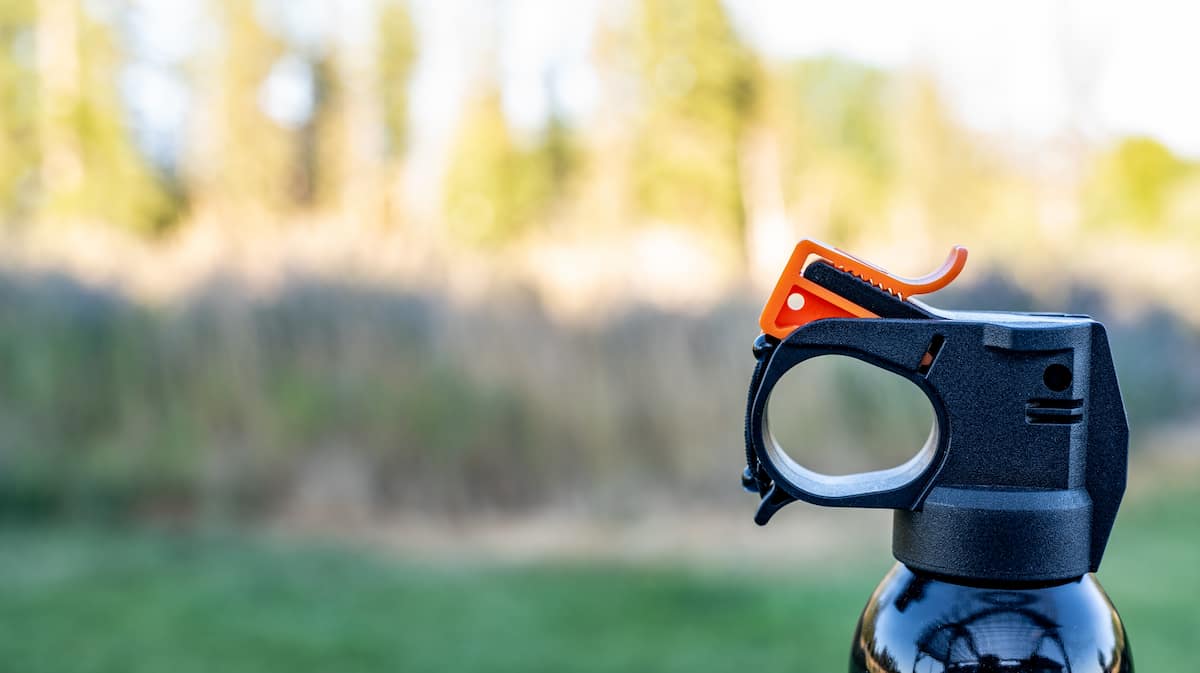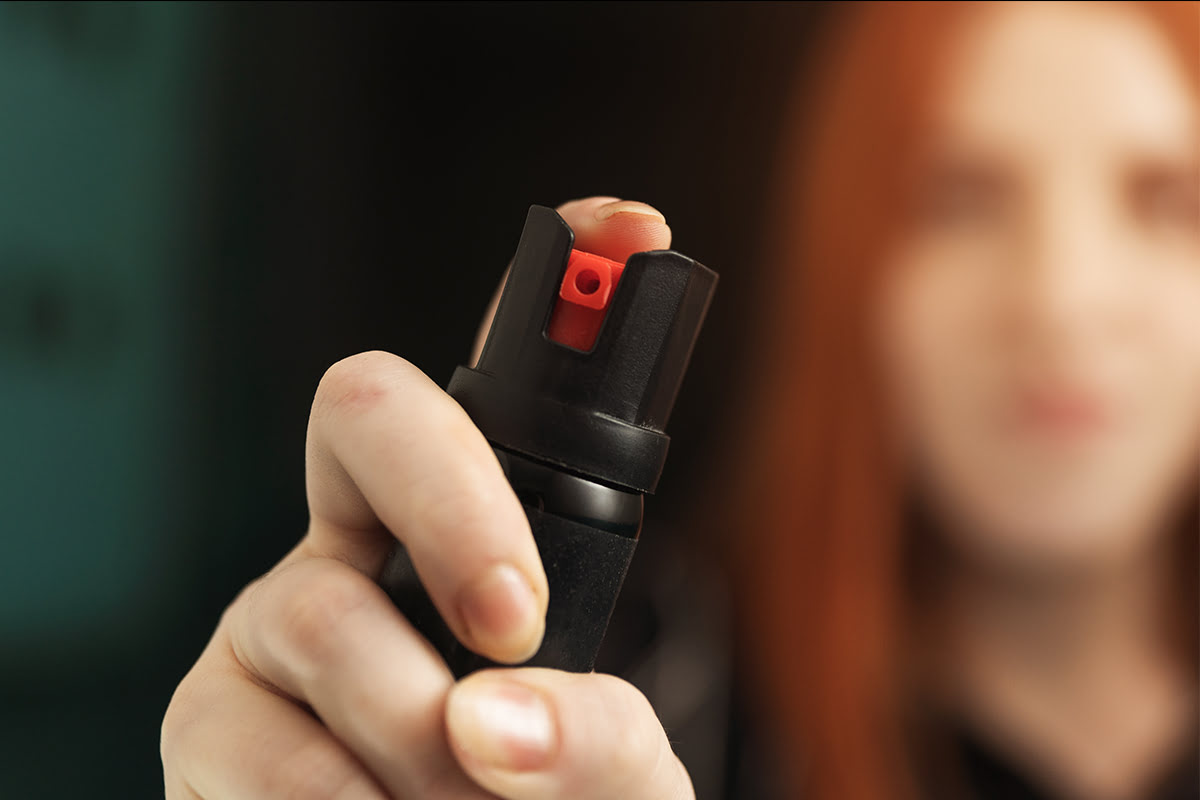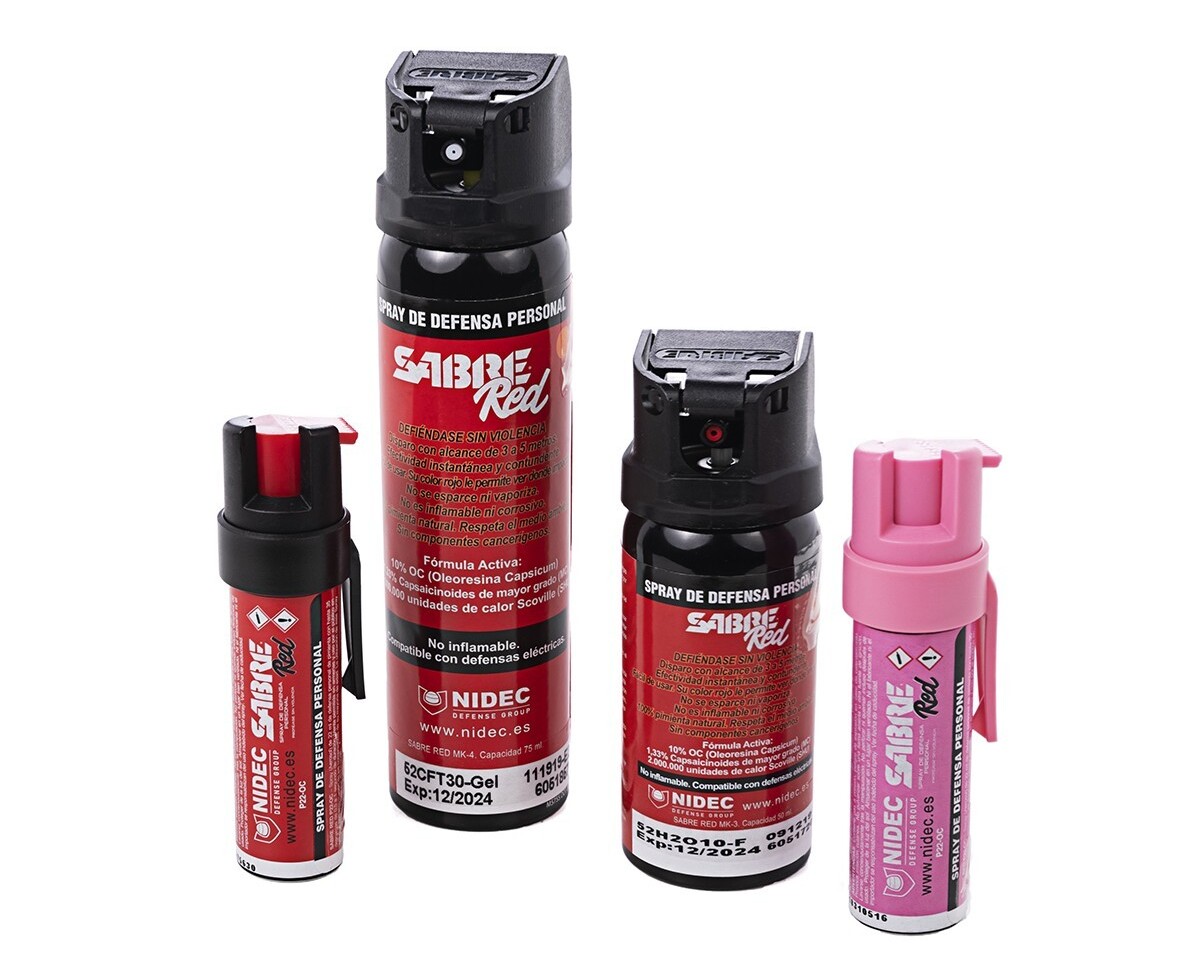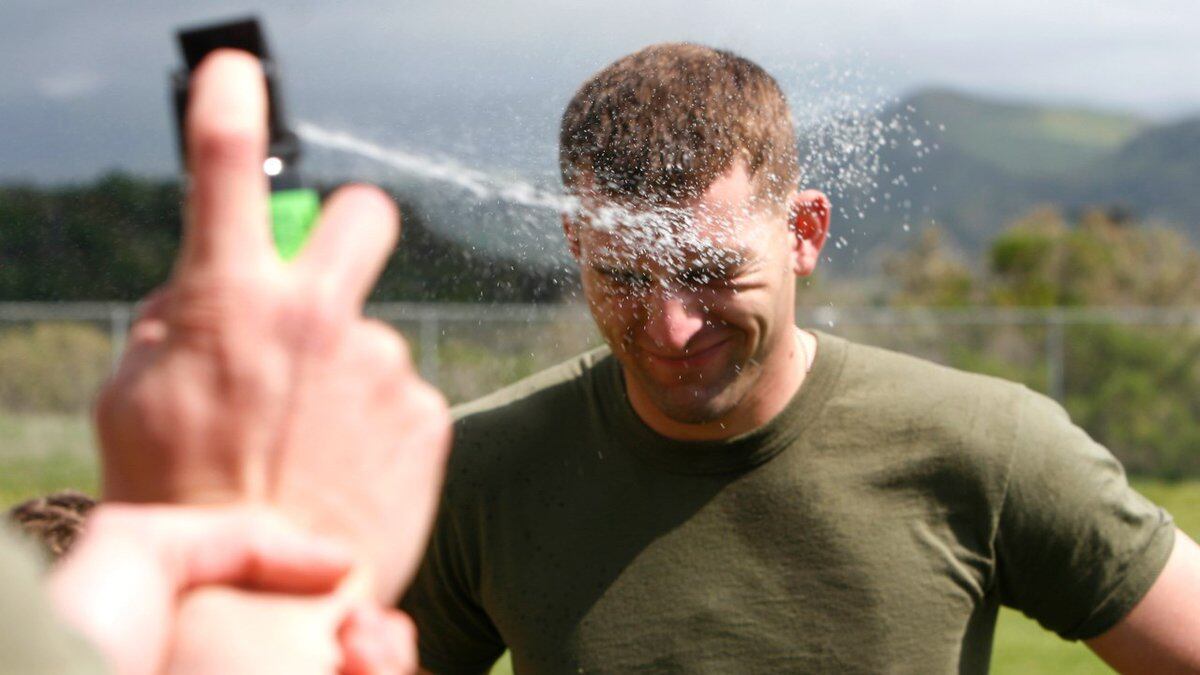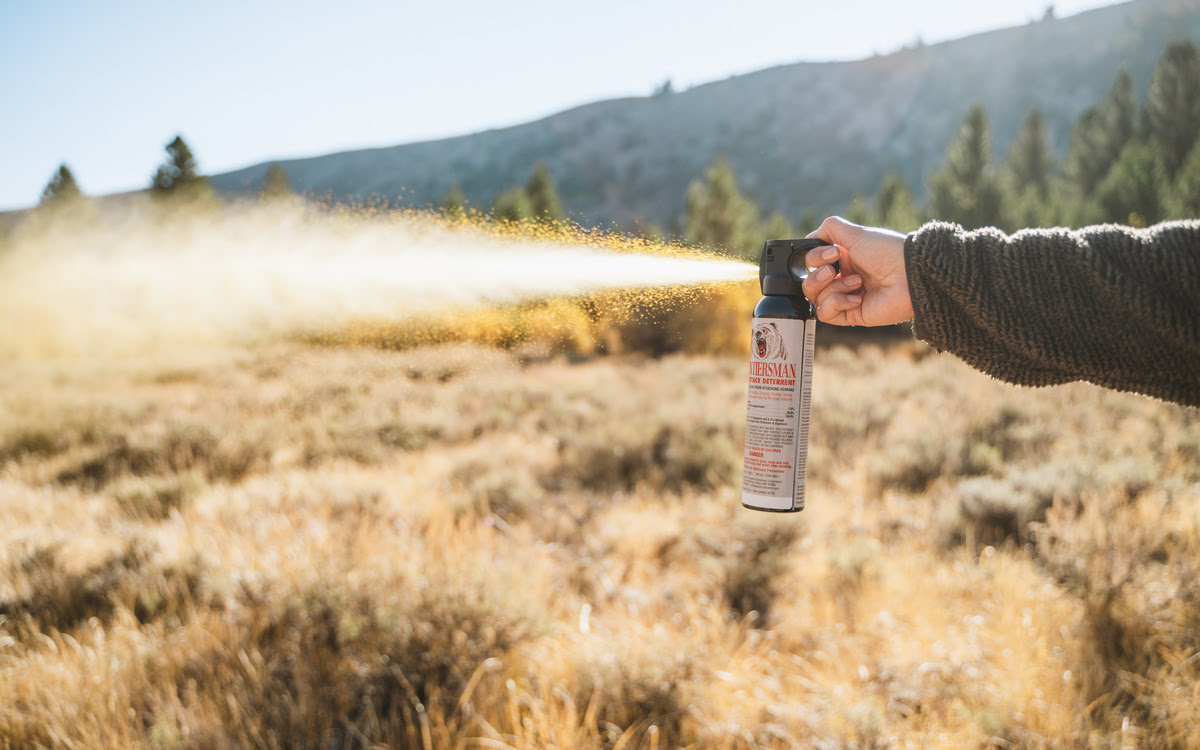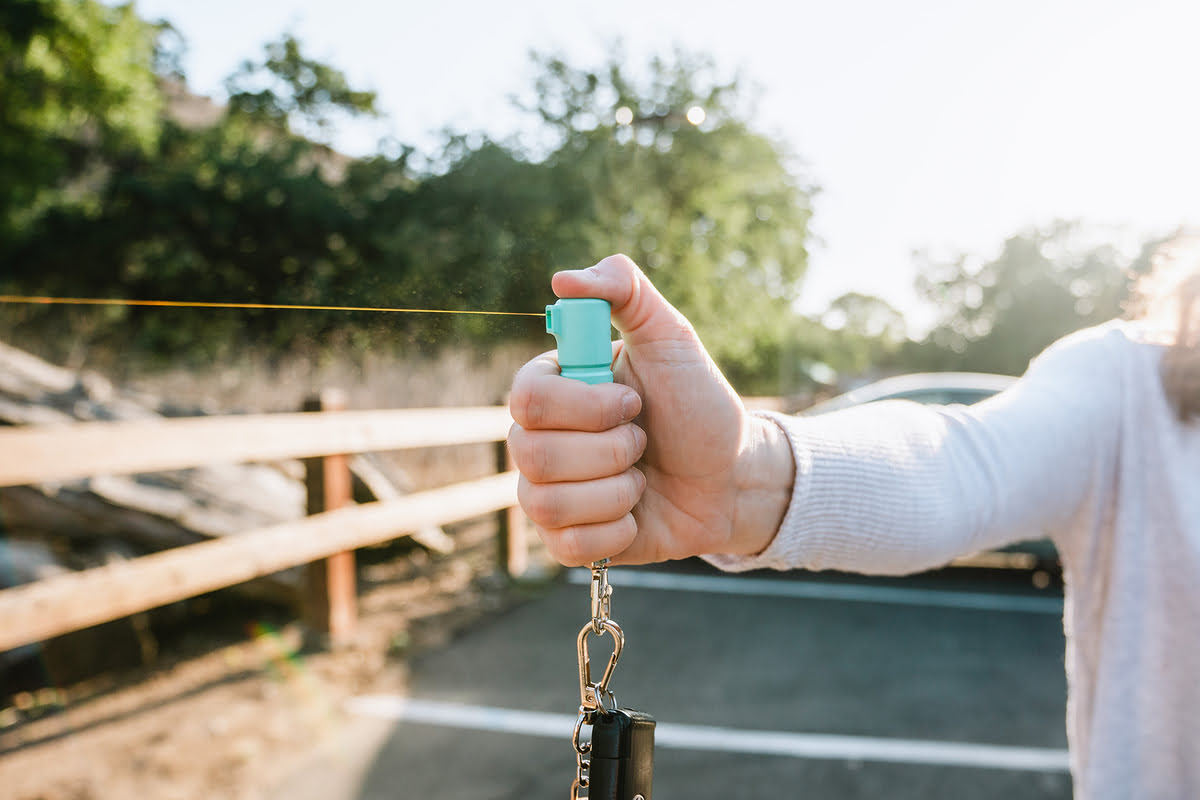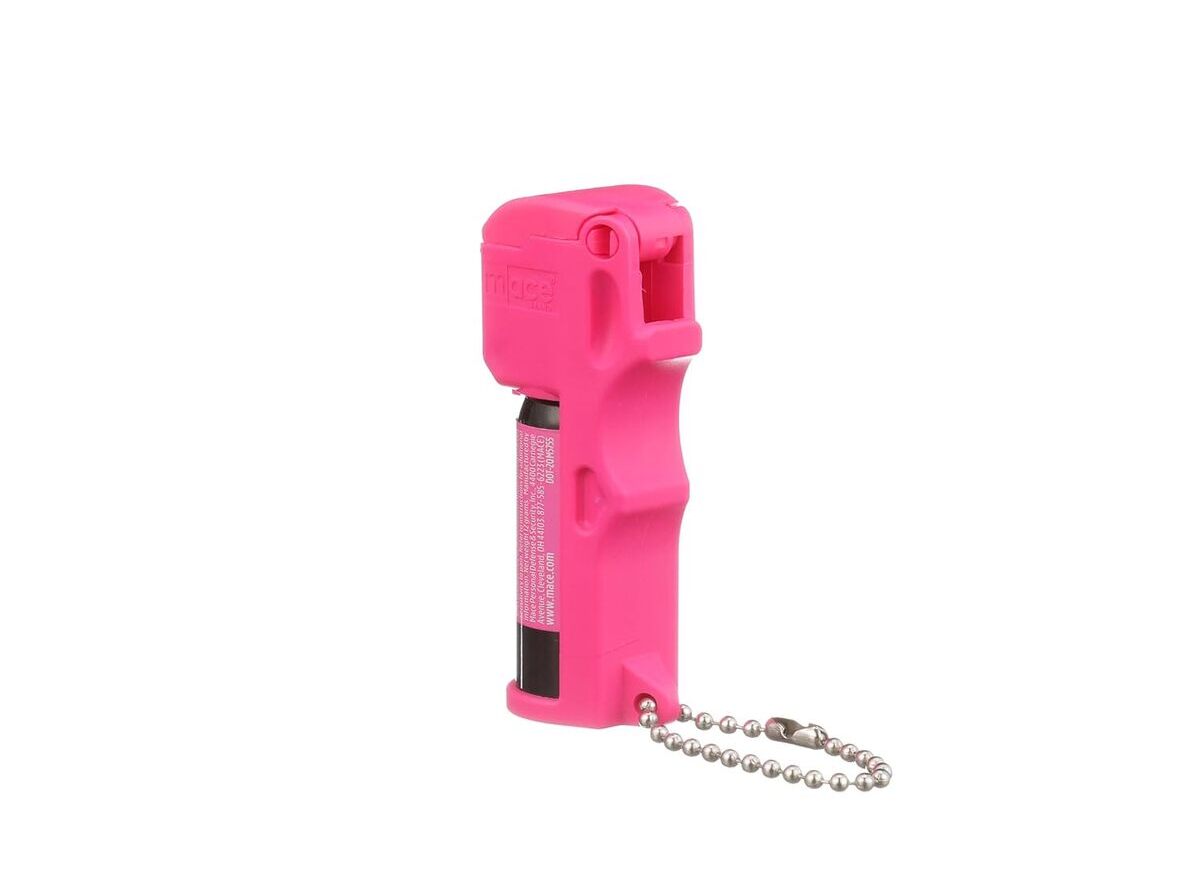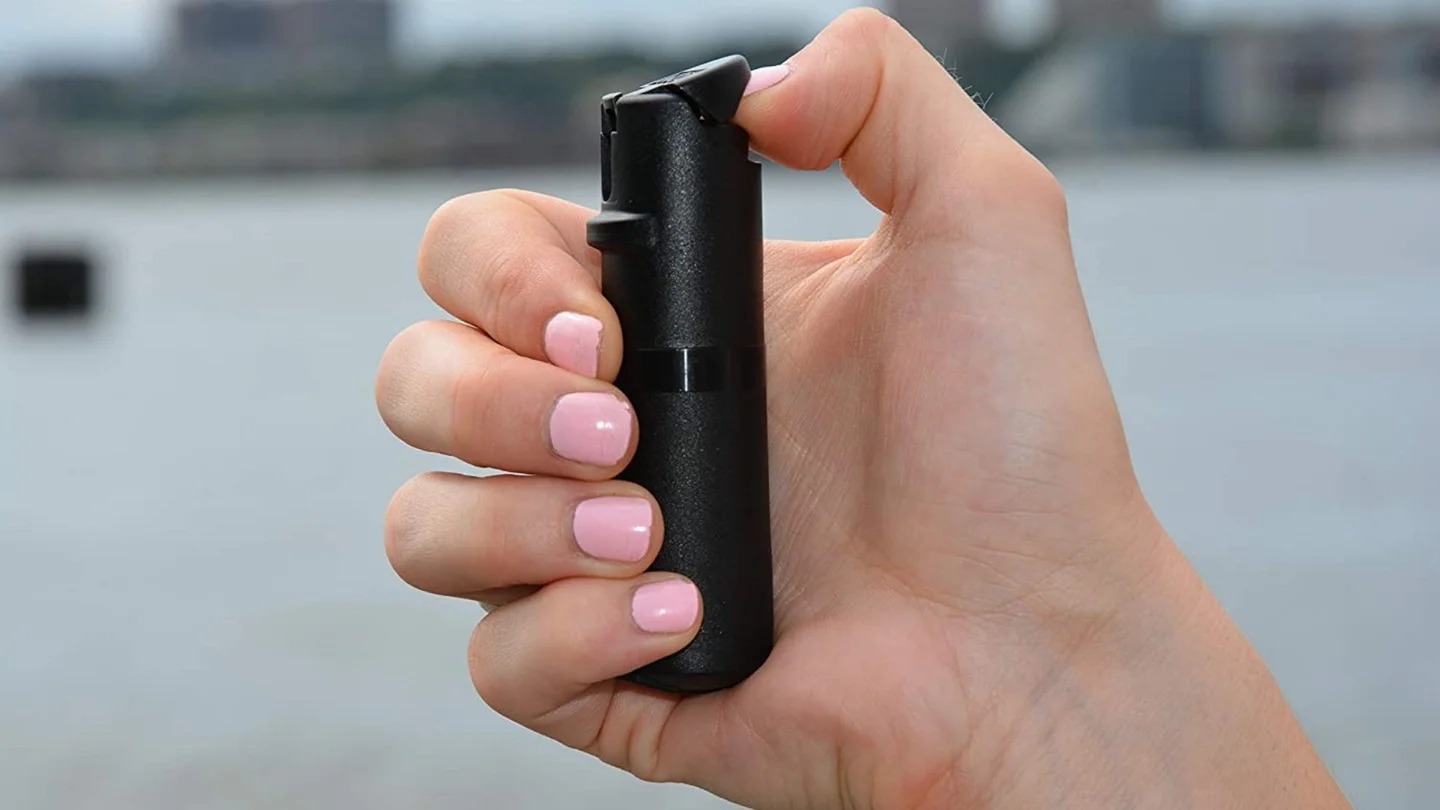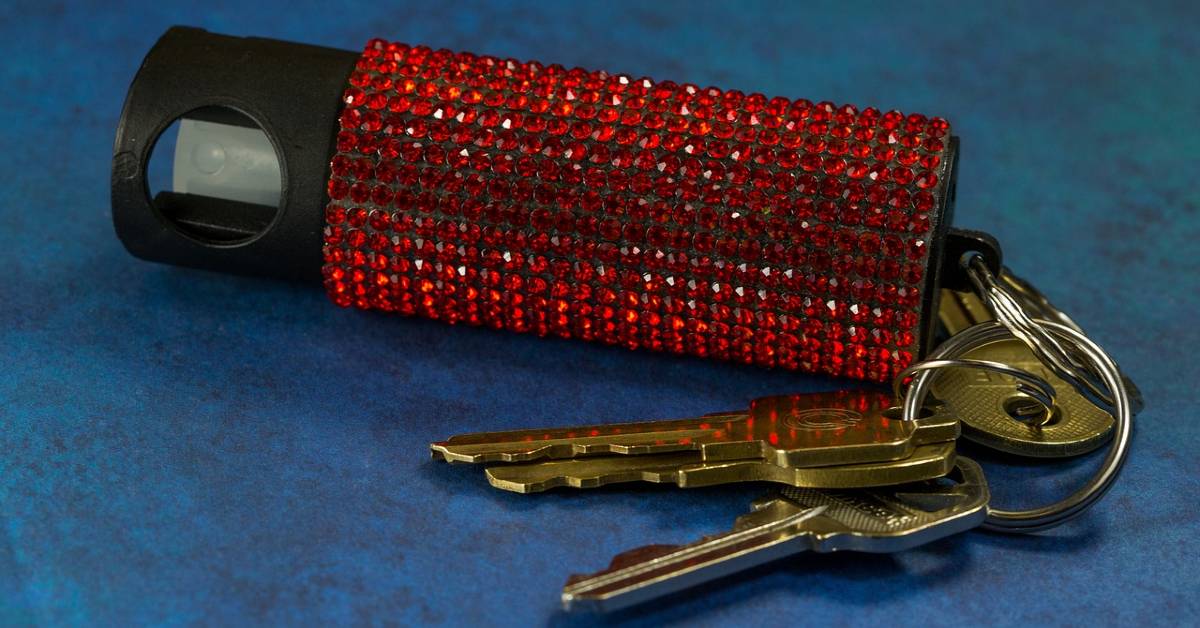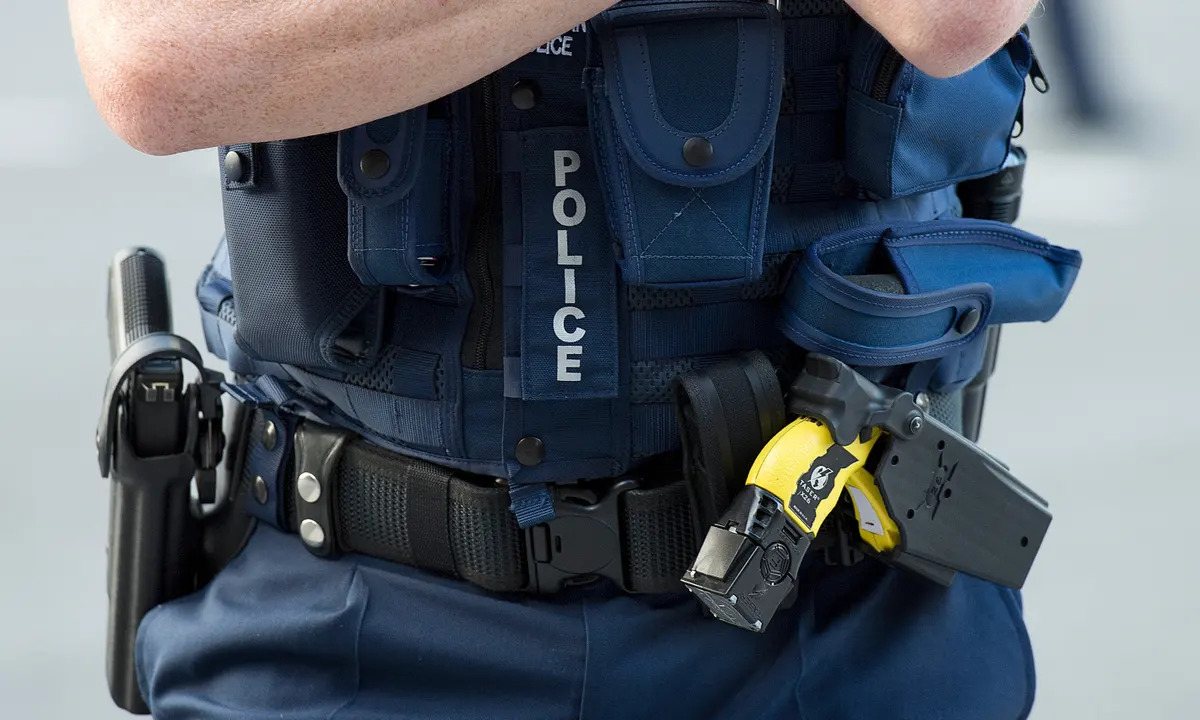Home>Home Security and Surveillance>What Is Pepper Spray Made Of
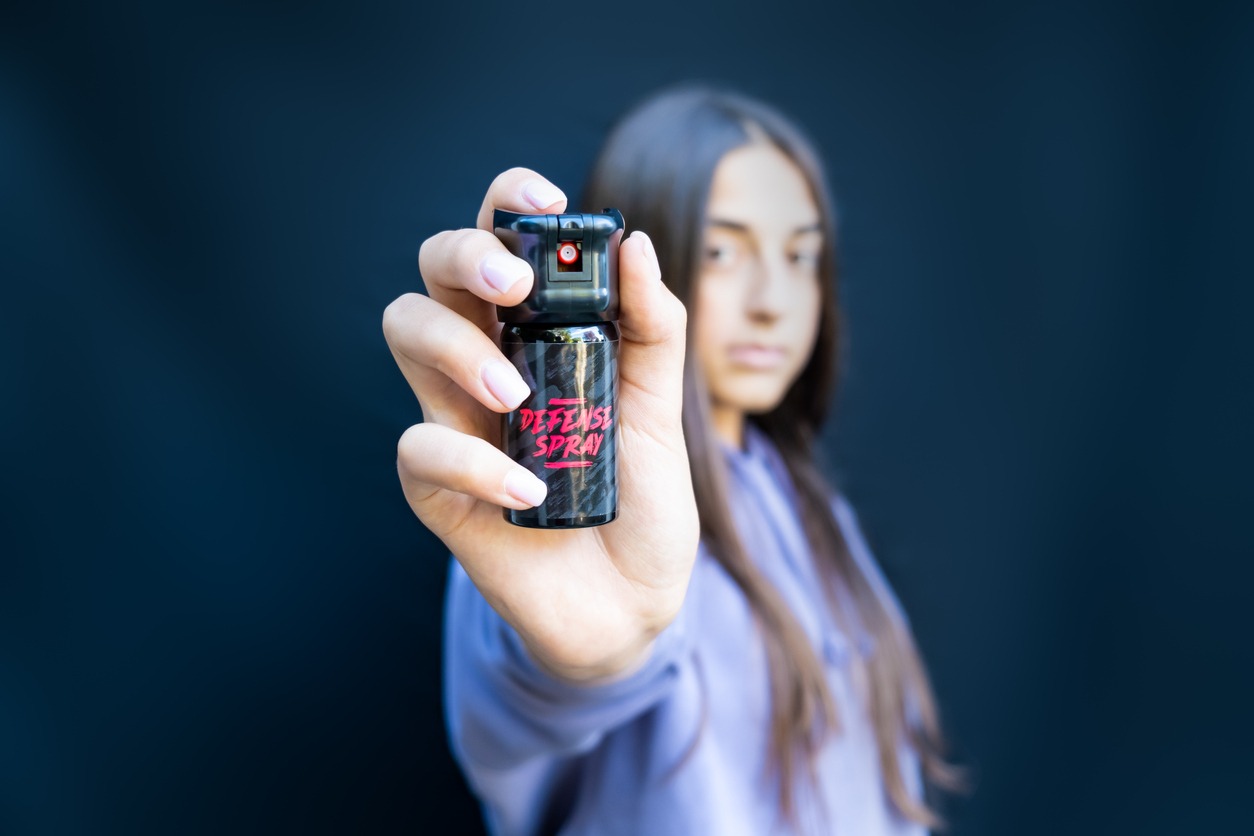

Home Security and Surveillance
What Is Pepper Spray Made Of
Modified: March 24, 2024
Discover what pepper spray is made of and how it can enhance your home security and surveillance measures. Learn about the ingredients and effectiveness of this powerful self-defense tool.
(Many of the links in this article redirect to a specific reviewed product. Your purchase of these products through affiliate links helps to generate commission for Storables.com, at no extra cost. Learn more)
Introduction: Overview of Pepper Spray and Its Uses
When it comes to self-defense, personal safety should never be compromised. That’s where pepper spray comes into play. Pepper spray, also known as OC spray or oleoresin capsicum spray, is a non-lethal self-defense tool that has gained popularity for its effectiveness in incapacitating an attacker temporarily. It provides individuals with a means to protect themselves, giving them valuable seconds to escape dangerous situations.
Pepper spray is a portable device that dispenses a concentrated solution containing capsaicinoids, derived from chili peppers. When sprayed, it causes intense irritation to the eyes, skin, and respiratory system, resulting in temporary discomfort and incapacitation. This makes it an ideal tool for personal security, as it allows individuals to defend themselves from potential threats without causing lasting harm.
The primary use of pepper spray is for personal self-defense. It provides an effective means of subduing an attacker, giving the user the opportunity to escape and seek help. Pepper spray can be used in various scenarios, including walking alone at night, jogging in secluded areas, or when facing an aggressive individual in a public setting.
In addition to personal defense, pepper spray is also utilized by law enforcement agencies as a non-lethal alternative to firearms. It allows officers to immobilize an aggressive subject without resorting to potentially deadly force, minimizing the risk of causing permanent harm.
Pepper spray comes in various forms, including handheld canisters, keychain-sized devices, and even disguised as everyday objects such as pens or lipstick tubes. This makes it easily accessible and discreet, allowing individuals to carry it with them at all times.
It is important to note that while pepper spray is an effective tool for self-defense, proper training and responsible usage are essential. Understanding how to properly aim and deploy pepper spray can significantly increase its effectiveness. Additionally, familiarizing oneself with local laws and regulations regarding the possession and use of pepper spray is crucial to ensure legal compliance.
Now that we have a general understanding of what pepper spray is and its primary uses, let us delve deeper into its history, active ingredients, manufacturing process, and safety considerations.
Key Takeaways:
- Pepper spray, made from chili peppers, is a non-lethal self-defense tool that temporarily incapacitates attackers, providing valuable escape time. It’s important to use it responsibly and be aware of legal regulations.
- Understanding the legalities, safety considerations, and alternative self-defense options for pepper spray empowers individuals to make informed decisions about their personal safety.
Read more: What Is Pepper Spray
History of Pepper Spray: Origins and Development of Pepper Spray as a Self-Defense Tool
The concept of using pepper spray as a self-defense tool dates back centuries. Its origins can be traced back to ancient civilizations, where they utilized naturally occurring substances for protection. However, the development of modern pepper spray began in the late 1960s.
Pepper spray, as we know it today, was first developed by a group of law enforcement and military professionals who sought a non-lethal alternative to firearms. Their goal was to create a tool that could incapacitate an attacker without causing long-term harm or fatalities.
The active ingredient in pepper spray, capsaicin, is derived from chili peppers. Capsaicin works by stimulating the nerve endings in the eyes, skin, and respiratory system, causing intense irritation and temporary incapacitation. The idea behind using capsaicin as a self-defense tool came from the observation that chili peppers had a similar effect when coming into contact with the eyes or skin.
Initially, the creators experimented with different methods of delivering capsaicin to an attacker. One of the earliest inventions was the tear gas aerosol spray used by law enforcement. However, it was soon discovered that tear gas had limited effectiveness against determined attackers, which prompted the development of a more potent and reliable solution.
By the 1980s, aerosolized pepper spray became widely available for civilian use. It gained popularity due to its effectiveness, ease of use, and non-lethal nature. With the rising concerns for personal safety and the need for accessible self-defense tools, pepper spray became an essential item for many individuals.
Over the years, advancements have been made in the formulation and delivery systems of pepper spray. Manufacturers have developed variations, including gel-based sprays, foam sprays, and even pepper sprays with added UV dyes for identification of assailants. These innovations have improved the accuracy, range, and effectiveness of pepper spray, making it an even more reliable self-defense tool.
Today, pepper spray is widely utilized by law enforcement agencies, security personnel, and individuals seeking personal protection. Its effectiveness in neutralizing threats while minimizing the risk of serious injury or fatalities has made it a go-to self-defense tool.
Understanding the history of pepper spray gives us insight into its development as a self-defense tool. In the following sections, we will explore the active ingredient, manufacturing process, and safety considerations of pepper spray to provide a comprehensive understanding of this invaluable tool for personal safety.
Active Ingredient: Capsaicin: Explanation of Capsaicin and Its Role in Pepper Spray- Effects of Capsaicin on the Human Body
The active ingredient in pepper spray, capsaicin, is what gives it its potency. Capsaicin is a chemical compound found in chili peppers and is responsible for the intense heat and spiciness of these peppers. When used in pepper spray, capsaicin serves as a powerful irritant that directly affects the sensory receptors of the human body.
When pepper spray is sprayed, the capsaicin particles in the spray come into contact with the eyes, skin, and respiratory system of the attacker. The effects of capsaicin on the human body are immediate and significant.
When capsaicin comes into contact with the eyes, it causes extreme pain, tears, and involuntary blinking. The capsaicin irritates the nerve endings in the eyes, leading to temporary blindness and impairment of vision. This intense discomfort and loss of sight can disorient an attacker, providing the victim with a crucial opportunity to escape.
On the skin, capsaicin causes a burning sensation and redness. It also triggers an inflammatory response in the affected area, leading to swelling and increased sensitivity. This intense irritation can create a strong deterrent, causing the attacker to focus on alleviating the discomfort rather than pursuing their harmful intentions.
When inhaled, capsaicin affects the respiratory system, triggering coughing, wheezing, and difficulty breathing. It can cause temporary shortness of breath and even induce choking sensations, further incapacitating the attacker and giving the victim a chance to flee.
Capsaicin works by stimulating the pain receptors in the body, known as transient receptor potential (TRP) channels. The activation of these channels sends signals to the brain, resulting in the perception of pain and discomfort. The intensity of the effects depends on the concentration of capsaicin in the pepper spray and the duration of exposure.
It is important to note that the effects of capsaicin are temporary and typically subside within 30 minutes to an hour. After exposure, it is essential to flush the affected areas with cold water to help alleviate the sensations and promote recovery.
While capsaicin can be highly effective in incapacitating an attacker, it is crucial to exercise caution when using pepper spray, especially in enclosed spaces or against individuals who may have pre-existing respiratory conditions. Consulting local laws and regulations regarding the use of pepper spray is also vital to ensure responsible and legal usage.
Now that we understand how capsaicin, the active ingredient in pepper spray, affects the human body, let’s explore the manufacturing process and the role of other ingredients in creating an effective self-defense tool.
Manufacturing Process: Step-by-Step Guide on How Pepper Spray is Made- Ingredients and Mixing Method
The manufacturing process of pepper spray involves careful selection of ingredients and precise mixing to create an effective self-defense tool. While specific manufacturers may have variations in their processes, the following is a general step-by-step guide on how pepper spray is made:
Step 1: Selecting the Active Ingredient
The primary active ingredient in pepper spray is capsaicin, derived from chili peppers. The selection of chili peppers is crucial, as it determines the potency of the resulting pepper spray. Manufacturers often choose high-heat chili peppers, such as ghost peppers or habaneros, for their capsaicin content.
Step 2: Extracting the Capsaicin
The capsaicin is extracted from the chili peppers through several methods, including solvent extraction or steam distillation. These processes allow manufacturers to concentrate the capsaicinoids, ensuring a potent and effective pepper spray.
Step 3: Mixing with Solvents and Propellants
Once the capsaicin extract is obtained, it is mixed with solvents and propellants. These components serve multiple purposes in pepper spray:
– *Solvents*: Solvents like alcohol or oils help dissolve the capsaicin and other ingredients, ensuring proper dispersion and consistency.
– *Propellants*: Propellants, such as nitrogen or carbon dioxide, are added to create the pressurized spray and effectively dispense the pepper spray.
Step 4: Adding Additional Ingredients
In addition to capsaicin, pepper spray formulas may include other ingredients to enhance its effectiveness and safety. Some common additional ingredients include:
– *Inert ingredients*: These ingredients help stabilize the solution and prevent separation of components. They may also contribute to the spray’s color or improve its UV visibility for identification purposes.
– *Thickeners*: Thickeners, such as xanthan gum or guar gum, can be added to create a gel-based pepper spray, which adheres better to an attacker’s face and reduces the risk of blowback.
– *Dyes*: Some pepper sprays contain UV dyes, which can mark the attacker’s skin, making identification easier for law enforcement.
Step 5: Quality Control and Packaging
Once the ingredients are mixed, the pepper spray solution undergoes rigorous quality control tests to ensure its potency and effectiveness. This includes testing the spray pattern, concentration, and shelf life. After passing these tests, the pepper spray is packaged into canisters or other delivery systems, ready for distribution.
It is important to note that the manufacturing of pepper spray requires strict adherence to safety guidelines and regulations. Manufacturers must follow proper safety protocols to prevent accidental exposure during the production process.
Understanding the manufacturing process gives us insight into the development of pepper spray. In the next section, we will explore the other ingredients commonly found in pepper spray and their potential effects.
Inert Ingredients: Explanation of the Other Ingredients Found in Pepper Spray- Their Purpose and Potential Effects
In addition to capsaicin, pepper spray formulations often include inert ingredients that serve specific purposes in enhancing the effectiveness and safety of the spray. While these ingredients are considered inert, they still have important roles in the overall function of pepper spray. Let’s take a closer look at the other ingredients commonly found in pepper spray:
1. Solvents:
Solvents like alcohol or oils are used as carriers for the active ingredients in pepper spray. They help dissolve the capsaicin and other ingredients, ensuring proper dispersion and consistency. Solvents also aid in the evaporation of the spray once it is deployed, allowing it to linger in the air and increase the chances of it reaching an attacker’s eyes and respiratory system.
2. Propellants:
Propellants are added to create the pressurized spray and effectively dispense the pepper spray. Common propellants include nitrogen or carbon dioxide, which provide the necessary force for the spray to be expelled from the canister. The propellants also aid in creating a consistent spray pattern, ensuring that the pepper spray covers a wide area and effectively incapacitates the attacker.
3. Inert Fillers:
Inert fillers are often added to pepper spray formulations to increase the volume of the spray while reducing the concentration of the active ingredients. These fillers can include substances like water or inert powders. They serve to dilute the pepper spray solution, making it safer to use by reducing the risk of causing excessive harm or potential lasting effects on the attacker.
4. Stabilizers:
Stabilizers are added to maintain the proper consistency and stability of the pepper spray solution. They prevent separation of the ingredients and ensure that the spray remains effective over a long period. Stabilizers also contribute to the overall shelf life of the pepper spray, ensuring that it remains potent and reliable when needed.
5. UV Dyes:
Some pepper sprays include UV dyes, which are invisible to the naked eye but become detectable under ultraviolet light. These dyes serve as a valuable tool for law enforcement in identifying perpetrators after an altercation. When sprayed on an attacker, the UV dyes mark their skin, making it easier for authorities to identify and apprehend the individual later.
It is important to note that while inert ingredients are generally safe, individuals with specific allergies or sensitivities should exercise caution when using pepper spray. It is advisable to read the product labels carefully and consult a healthcare professional if there are any concerns about potential allergic reactions or adverse effects.
Understanding the inert ingredients in pepper spray provides a holistic understanding of the formulation and its intended effects. In the next section, we will explore the different variations and concentrations of pepper spray and their respective effects.
Pepper spray is made of oleoresin capsicum, derived from hot peppers. It also contains a solvent and propellant. Always use with caution and follow safety guidelines.
Read more: What Pepper Is Used In Pepper Spray
Different Variations and Concentrations: Overview of the Various Types of Pepper Spray Available- Comparison of Different Concentrations and Their Effects
Pepper spray is available in various formulations and concentrations to cater to different needs and preferences. Understanding the different variations and concentrations is crucial in choosing the most suitable option for personal self-defense. Let’s explore the different types of pepper spray and their effects:
1. Stream Spray:
Stream spray delivers a targeted, concentrated stream of pepper spray, allowing for greater accuracy and range. It is ideal for outdoor use or situations where the user needs to reach a specific target. Stream sprays release a continuous stream of pepper spray, minimizing the risk of blowback.
2. Fogger Spray:
Fogger spray, also known as cone spray, emits a wide cone-shaped spray that creates a cloud of pepper particles. This type of spray is suitable for indoor use or situations where there is a need to disperse the pepper spray over a larger area. Fogger sprays can effectively incapacitate multiple attackers or deter aggressive animals.
3. Gel Spray:
Gel spray contains a thick, sticky substance that adheres to an attacker’s face, reducing the risk of wind blowback and increasing accuracy. The gel format also minimizes the risk of cross-contamination, making it a preferred choice in crowded areas. Gel sprays have a longer range compared to foam sprays.
4. Foam Spray:
Foam spray dispenses pepper spray in a foam-like consistency. Upon contact, the foam sticks to the attacker’s face, immobilizing them and preventing the pepper spray from spreading. Foam sprays offer additional visibility, as they can be easily seen on an attacker’s face, aiding in identification by law enforcement.
5. Dual Sprays:
Dual sprays combine two or more types of spray patterns, allowing the user to switch between different modes based on the situation. For example, some pepper sprays may offer a stream and fogger combination, providing versatility and adaptability in self-defense scenarios.
Concentration Levels:
Pepper spray is available in different concentrations of capsaicin, usually indicated by the Scoville Heat Units (SHU). The higher the concentration, the more potent the spray. Concentrations can range from 0.18% up to 5.3% SHU. However, it is important to note that the effects of pepper spray depend not only on concentration but also on the delivery method and the duration of exposure.
A higher concentration of capsaicin translates to a more intense and immediate effect on the attacker. However, higher concentrations also increase the risk of causing lasting effects or potential harm. Selecting an appropriate concentration depends on factors such as the user’s comfort level, the level of threat anticipated, and the legality of the specific concentration in a given jurisdiction.
It’s important to check local regulations regarding the legal limits on pepper spray concentration, as some jurisdictions have restrictions to prevent misuse or excessive harm.
Understanding the different variations and concentrations of pepper spray allows individuals to choose the most suitable option for their personal self-defense needs. In the next section, we will explore important safety considerations when using pepper spray.
Safety Considerations: Guidelines for Safe Use of Pepper Spray- Potential Risks and Precautions
While pepper spray is a valuable self-defense tool, it is important to use it responsibly and with caution. Understanding the potential risks and taking appropriate precautions can ensure its effective and safe use. Here are some guidelines and safety considerations:
1. Familiarize Yourself:
Before using pepper spray, read the instructions provided by the manufacturer carefully. Familiarize yourself with the specific features and functionalities of the pepper spray you have. Practice using it in a controlled environment to gain confidence and accuracy.
2. Know the Legalities:
Research and understand the laws and regulations regarding the possession and use of pepper spray in your jurisdiction. Different countries, states, and localities may have varying restrictions on the size, concentration, and usage of pepper spray. Adhering to these legalities will ensure responsible use and help avoid any legal consequences.
3. Aim for the Face:
When using pepper spray, aim for the attacker’s face, specifically the eyes and nose. This will maximize the impact and effectiveness of the spray. Remember, accuracy is key, especially in high-stress situations. Practice proper aim and technique to ensure effective deployment.
4. Be Mindful of Wind Direction:
Consider the wind direction when deploying pepper spray. If possible, position yourself upwind to avoid any blowback that may affect your own eyes and respiratory system. Take note of any bystanders or innocent individuals nearby who may inadvertently be exposed to the spray.
5. Maintain a Safe Distance:
Maintain a safe distance from the attacker before using pepper spray. The recommended distance may vary depending on the specific pepper spray product, so refer to the instructions provided by the manufacturer. Giving yourself enough space will ensure that the spray can reach the intended target effectively.
6. Use in Well-Ventilated Areas:
Whenever possible, use pepper spray in well-ventilated areas. Good ventilation helps disperse the pepper spray particles faster, reducing the risk of prolonged discomfort for both you and the attacker. However, be mindful of indoor spaces where ventilation may be limited, as it can lead to higher concentrations of pepper spray in the air.
7. Practice De-escalation and Escape:
The primary purpose of using pepper spray is to create an opportunity for escape. Use it as a last resort when all other de-escalation techniques have failed. Once the attacker is incapacitated, focus on removing yourself from the situation and seeking help.
8. Consider Personal Allergies or Sensitivities:
If you have known allergies or sensitivities to capsaicin or any other ingredient in pepper spray, exercise caution. Consult a healthcare professional for guidance on alternative self-defense options that may be more suitable for you.
Remember, pepper spray is a self-defense tool, not a weapon of aggression. Use it responsibly and only when necessary to protect yourself from imminent harm. Regularly check the expiration date of your pepper spray canister and replace it if it has passed its shelf life.
By following these guidelines and considering safety precautions, you can effectively utilize pepper spray as a means of personal protection while minimizing potential risks.
In the next section, we will explore the legalities and restrictions surrounding the possession and use of pepper spray in different jurisdictions.
Legalities and Restrictions: Discussion on the Legal Status of Pepper Spray- Different Laws and Restrictions in Different Countries and States
The legal status of pepper spray can vary significantly depending on the country, state, or locality in which you reside. While pepper spray is widely recognized as a non-lethal self-defense tool, it is important to understand the specific laws and regulations surrounding its possession and use. Here is a general overview of the legalities and restrictions that exist:
United States:
In the United States, pepper spray is legal to possess and use for self-defense purposes in all 50 states. However, there may be restrictions on the size, concentration, and the manner in which it can be carried. Some states require individuals to be a certain age or have a permit to carry pepper spray. It is essential to research and understand the specific laws in your state to ensure compliance.
Canada:
Pepper spray is classified as a prohibited weapon in Canada, making its possession and use illegal for self-defense purposes. However, there are specific exceptions in certain provinces for individuals who use bear spray as a deterrent against wildlife. It is crucial to consult local laws and regulations to determine the legality of pepper spray in your specific area.
United Kingdom:
Pepper spray, along with other self-defense sprays, is classified as a prohibited weapon in the United Kingdom. Its possession, sale, and use are strictly regulated and can result in criminal charges. However, there are legal alternatives available, such as personal alarms or safety whistles, that can be used for self-defense purposes.
Australia:
The laws regulating pepper spray in Australia vary among its different states and territories. In some areas, pepper spray is classified as a prohibited weapon, while in others, it is allowed for personal self-defense under specific circumstances. It is important to check the laws specific to your state or territory before purchasing or possessing pepper spray.
Other Countries:
The legal status of pepper spray varies widely in other countries around the world. Some countries may have strict regulations, while others may permit its possession and use for self-defense purposes. It is crucial to research and familiarize yourself with the laws and regulations of the specific country you are in or planning to visit.
It is worth noting that even in areas where pepper spray is legal, the concentration and size may be regulated. Some jurisdictions may limit the concentration of capsaicin or require specific labeling and packaging standards. It is important to follow any guidelines or restrictions set forth by local authorities to ensure lawful possession and use.
Always remember that the information provided here is a general overview, and specific laws can change over time. It is essential to consult local law enforcement or legal professionals to obtain the most accurate and up-to-date information regarding the legal status of pepper spray in your area.
In the following section, we will explore alternative self-defense options for those who are unable to legally possess or use pepper spray in their jurisdiction.
Alternatives to Pepper Spray: Introduction to Other Self-Defense Options- Comparison of Alternative Tools or Methods
For individuals who are unable to legally possess or use pepper spray in their jurisdiction, there are alternative self-defense options available. These alternatives vary in their effectiveness, ease of use, and legality. Let’s explore some of the commonly used alternatives to pepper spray:
1. Personal Alarms:
Personal alarms are small, handheld devices that emit a loud, high-pitched sound when activated. They are designed to startle and attract attention, potentially deterring an attacker and alerting others nearby to your situation. Personal alarms are legal in most jurisdictions and can be easily carried on a keychain or in a pocket.
2. Stun Guns/Tasers:
Stun guns and Tasers are non-lethal electronic devices that incapacitate an attacker by delivering an electric shock. They work by disrupting the body’s electrical signals, temporarily immobilizing the attacker. Stun guns require close contact to be effective, whereas Tasers can be used from a distance. However, the legality of stun guns and Tasers varies greatly depending on the jurisdiction, so it is important to research local laws and regulations.
3. Self-Defense Keychains:
Self-defense keychains are compact devices that can be attached to a keyring. They typically feature a sharp point or a striking surface that can be used to defend oneself in close quarters. These keychains provide a discreet and easily accessible option for self-defense, but their legality can vary based on local laws.
4. Martial Arts and Self-Defense Training:
Learning self-defense techniques through martial arts or self-defense classes can provide individuals with valuable skills to protect themselves. These training programs teach various techniques, such as strikes, blocks, and evasion, empowering individuals to defend themselves effectively. Training in martial arts not only promotes physical fitness but also enhances mental discipline and self-confidence.
5. Flashlights:
A bright, tactical flashlight can serve as a useful self-defense tool. Shining a powerful light in an attacker’s eyes can temporarily blind and disorient them, providing an opportunity to escape. Tactical flashlights often have additional features like strobe modes or sharp bezels that can be used for striking. Flashlights are legal and commonly carried for personal safety purposes.
6. Whistles:
Whistles can be an effective tool for summoning help or drawing attention to a dangerous situation. Their loud, piercing sound can startle an attacker and alert others nearby of potential trouble. Whistles are legal, easy to carry, and can be useful in various scenarios.
When considering alternative self-defense options, it is important to assess their legality in your jurisdiction, as well as your comfort level and ability to use the chosen tool effectively. Remember that prevention, awareness, and personal safety strategies are also essential components of self-defense. Staying in well-lit areas, using designated walking paths, and being mindful of your surroundings can help reduce the likelihood of becoming a target.
Ultimately, the effectiveness of any self-defense tool or method lies in the individual’s training, preparedness, and ability to confidently act in a threatening situation. Assess your needs and consult with professionals or experts for guidance to find an alternative self-defense option that aligns with your preferences and local regulations.
In the next section, we will recap the key points discussed in the article and offer some final thoughts on the effectiveness and importance of self-defense tools and strategies.
Read more: What To Do When Sprayed With Pepper Spray
Conclusion: Recap of Key Points Discussed in the Article- Final Thoughts on the Effectiveness and Importance of Pepper Spray
In this article, we have delved into the world of pepper spray, exploring its history, active ingredients, manufacturing process, safety considerations, legalities, and alternative options. Let’s recap the key points we covered:
– Pepper spray is a non-lethal self-defense tool that temporarily incapacitates an attacker, providing valuable seconds to escape dangerous situations.
– The active ingredient in pepper spray, capsaicin, derived from chili peppers, causes intense irritation to the eyes, skin, and respiratory system.
– The manufacturing process involves extracting capsaicin, mixing it with solvents, propellants, and inert ingredients, ensuring proper dispersion and stability.
– Different variations of pepper spray, such as stream spray, fogger spray, gel spray, and foam spray, offer versatility in usage and effectiveness in different scenarios.
– Pepper spray concentrations vary, and higher concentrations result in more intense effects, but responsible usage is crucial to minimize potential harm.
– Safety considerations include proper aiming, awareness of wind direction, maintaining distance, and practicing de-escalation and escape techniques.
– The legalities and restrictions surrounding pepper spray vary between countries and states, and it is essential to be aware of local laws.
– Alternative self-defense options, such as personal alarms, stun guns/tasers, self-defense keychains, martial arts training, flashlights, and whistles, offer viable choices for those who cannot legally possess or use pepper spray.
In conclusion, pepper spray remains an effective and widely used self-defense tool due to its incapacitating effects and portability. It provides individuals with an added layer of confidence and the ability to protect themselves in potentially dangerous situations. However, it is important to approach the use of pepper spray responsibly, in accordance with legal regulations and with consideration for potential risks.
Remember, while self-defense tools like pepper spray can serve as important deterrents, personal safety strategies and awareness are equally crucial. Being mindful of your surroundings, practicing situational awareness, and seeking self-defense training can go a long way in preventing and effectively responding to threats.
Ultimately, the choice of a self-defense tool should be based on personal comfort, legality, and individual needs. It is always advisable to consult legal professionals or local law enforcement to ensure adherence to the specific laws governing self-defense tools and strategies in your area.
Stay safe, be prepared, and may you find peace of mind knowing that you have options to protect yourself in times of need.
Frequently Asked Questions about What Is Pepper Spray Made Of
Was this page helpful?
At Storables.com, we guarantee accurate and reliable information. Our content, validated by Expert Board Contributors, is crafted following stringent Editorial Policies. We're committed to providing you with well-researched, expert-backed insights for all your informational needs.
